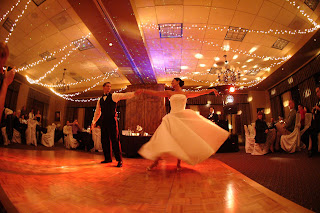Untitiled #6, 1996 by Anna Gaskell. Chromogenic print, A.P.
2/2, edition of 5, 19 x 23 1/4 inches.
Soloman R. Guggenheim Museum, New York.
Purchased with funds contributed by the Young Collectors Council 97.4581 © 1999 Anna Gaskell
Chapter 3: Sweet is to Scan...Fiction and Fantasy:
Gaskell's work definitely falls under the category of fiction and fantasy. Her work focuses on and references children's games, stories and psychology. Gaskell's style is narrative, and in this particular photo, she is referencing Lewis Carroll's Alice in Wonderland.
Chapter 6: Photography as Art...Photography Extending Art:
This photograph is definitely an example of photography extending art. While it is a photograph and a celebration of the medium, it is also seemingly mimicing the surrealism and fantasy that is more often found in other mediums such as drawing or painting. It also has a soft and colorful feel of a painting. Visually, the photograph is surreal, thus creating a fantastical wonderland for both "Alice" and the viewer.
Chapter 4: The Subject as an Object:
Gaskell's narrative turns the faceless girl into a surreal object, floating in space. "Alice's" body becomes the subject and object for the viewer.
Three of my own recent images...
Coolest stop sign ever! But it should "believin'!" :)
These are my adorable nextdoor neighbors. I took this photo for a Christmas card.
I like the angle of this shot and the raindrops on my coffee cup.
Cinthea, for extra credit...
From the series "Skeleton Coast" 04 by Alexander Apostol
Fotografia Digital
75 x 175 cm
2005
Chapter 2: Surveyors and Surveyed...
Apostol's photographs of the "Skeleton Coast" can definitely be considered documentary photography. Documentary photography can be used to document and record environments, events and people. In this case, Apostol is documenting the "skeletal" structures or frameworks of buildings.
Chapter 5: Photography and Commodity Culture...
This series of photographs could essentially be the epitome of commodity culture and consumerism. It is a documentation of Western commodity and our need to constantly be tearing down and rebuilding. Everything, including buildings must always be bigger, better and grander.
Chapter 6: On and Beyond the White Walls....
These photos are seemingly conceptual and representational, which are themes discussed in Chapter 6. Apostol is documenting the expansion and build-up of the West to comment on bigger concepts or issues such as consumerism and mass production.



























